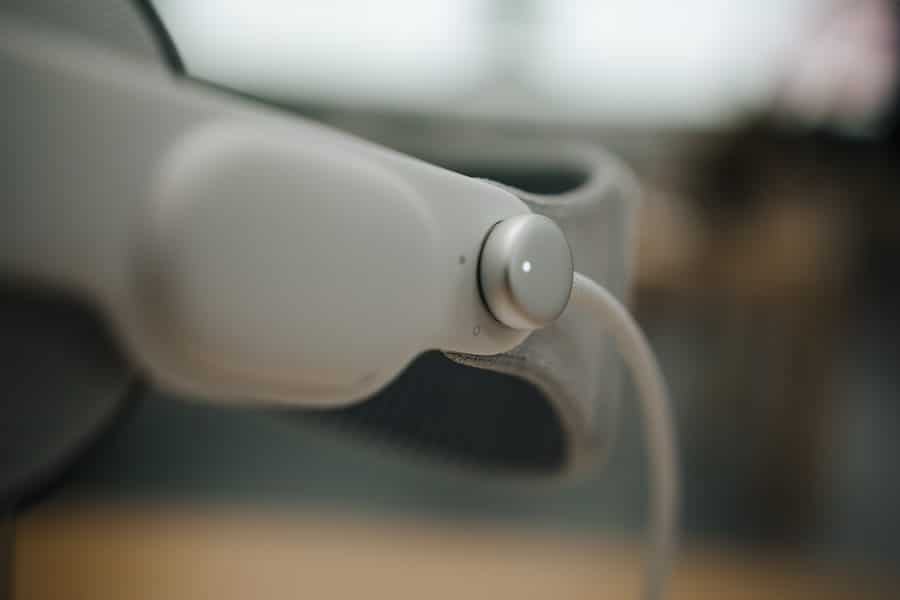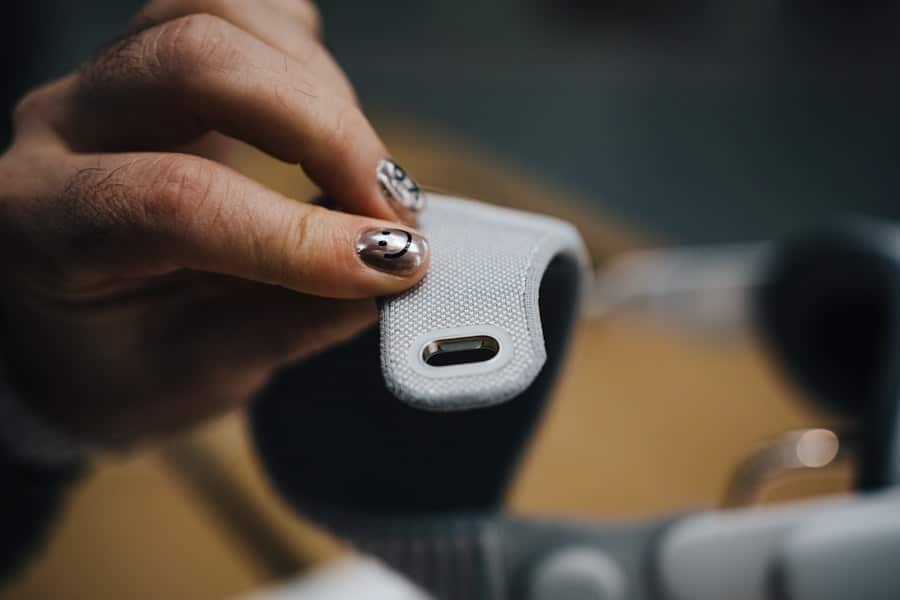Mixed reality (MR) represents a convergence of the physical and digital worlds, allowing users to interact with both real and virtual elements in a seamless manner. This technology has gained significant traction in various fields, particularly in advanced robotics training. As industries increasingly rely on automation and robotics, the need for effective training methodologies has become paramount.
Traditional training methods often fall short in providing the immersive and interactive experiences necessary for mastering complex robotic systems. Mixed reality offers a solution by creating a dynamic environment where trainees can engage with robotic systems in a more intuitive and effective way. Advanced robotics training encompasses a wide range of skills, from programming and operation to maintenance and troubleshooting.
The integration of mixed reality into this training paradigm not only enhances the learning experience but also prepares trainees for real-world applications. By simulating complex scenarios and providing immediate feedback, MR can significantly improve the efficiency and effectiveness of training programs. As we delve deeper into the benefits and applications of mixed reality in advanced robotics training, it becomes evident that this technology is poised to revolutionize how we prepare individuals for careers in robotics.
Key Takeaways
- Mixed reality combines virtual and physical elements to create an immersive training environment for advanced robotics.
- Using mixed reality in advanced robotics training can improve learning outcomes, increase engagement, and reduce training costs.
- Mixed reality enhances simulation and practice for robotics tasks by providing realistic and interactive training scenarios.
- Mixed reality plays a crucial role in improving safety and risk management in robotics training by allowing trainees to practice in a controlled environment.
- Case studies have shown successful applications of mixed reality in advanced robotics training, leading to improved skills and performance in trainees.
The Benefits of Using Mixed Reality in Advanced Robotics Training
One of the most significant advantages of mixed reality in advanced robotics training is its ability to create immersive learning environments. Trainees can interact with 3D holograms of robotic systems, allowing them to visualize components and understand their functions in a way that traditional methods cannot achieve. This immersive experience fosters a deeper understanding of complex concepts, as learners can manipulate virtual objects and observe their behavior in real-time.
For instance, a trainee learning about robotic arms can visualize the kinematics involved in their movement, gaining insights that would be difficult to grasp through textbooks or lectures alone. Moreover, mixed reality facilitates experiential learning, which is crucial in mastering robotics. By engaging with virtual simulations that mimic real-world scenarios, trainees can practice their skills without the risks associated with operating actual machinery.
This hands-on approach not only builds confidence but also allows for repeated practice in a safe environment. For example, a trainee can repeatedly program a robot to navigate through an obstacle course, refining their skills until they achieve proficiency. This iterative learning process is essential for developing the expertise required to operate advanced robotic systems effectively.
How Mixed Reality Enhances Simulation and Practice for Robotics Tasks
Mixed reality enhances simulation by providing a platform where virtual elements can be overlaid onto the real world, creating a hybrid environment that is both engaging and educational. In advanced robotics training, this means that trainees can see virtual representations of robots superimposed on their actual surroundings. This capability allows for contextual learning, where trainees can understand how robotic systems interact with their environment.
For instance, when training on autonomous drones, learners can visualize flight paths and obstacles in real-time, making it easier to grasp concepts such as navigation and obstacle avoidance. Additionally, mixed reality enables the simulation of complex tasks that may be difficult or dangerous to replicate in real life. For example, trainees can practice emergency response scenarios involving industrial robots without the risk of injury or equipment damage.
By simulating these high-stakes situations, learners can develop critical decision-making skills and learn how to respond effectively under pressure. The ability to simulate various scenarios also allows trainers to assess a trainee’s performance in diverse conditions, providing valuable insights into their readiness for real-world challenges.
The Role of Mixed Reality in Improving Safety and Risk Management in Robotics Training
Safety is a paramount concern in any field involving robotics, particularly when dealing with heavy machinery or automated systems that pose risks to operators. Mixed reality plays a crucial role in enhancing safety during training by allowing learners to engage with robotic systems in a controlled environment. By simulating potentially hazardous situations, trainees can learn how to navigate risks without facing real-world consequences.
For instance, they can practice emergency shutdown procedures or troubleshoot malfunctioning robots without the fear of injury or equipment failure. Furthermore, mixed reality can be used to educate trainees about safety protocols and best practices in an engaging manner. Through interactive simulations, learners can experience the consequences of unsafe actions, reinforcing the importance of adhering to safety guidelines.
For example, a trainee might encounter a scenario where they neglect to follow proper lockout/tagout procedures while working on a robotic system. The simulation could illustrate the potential hazards of such negligence, thereby instilling a strong safety culture among trainees. This proactive approach to safety education not only prepares individuals for real-world challenges but also contributes to reducing workplace accidents and injuries.
Case Studies: Successful Applications of Mixed Reality in Advanced Robotics Training
Several organizations have successfully implemented mixed reality in their advanced robotics training programs, showcasing its effectiveness and potential for broader adoption. One notable example is the use of MR by Boeing for training technicians on aircraft assembly processes. By utilizing mixed reality headsets, technicians can visualize complex assembly instructions overlaid on physical components, allowing them to understand intricate details more clearly.
Another compelling case study comes from the automotive industry, where Ford has integrated mixed reality into its robotics training initiatives. By employing MR technology, Ford has enabled engineers to visualize robotic processes during vehicle assembly.
This visualization aids in identifying potential issues before they arise on the production line, ultimately leading to smoother operations and reduced downtime. The success of these implementations highlights the versatility of mixed reality across different sectors and its potential to transform training methodologies.
The Future of Mixed Reality in Robotics Training: Potential Developments and Innovations
As technology continues to evolve, the future of mixed reality in robotics training holds exciting possibilities. One potential development is the integration of artificial intelligence (AI) with MR systems. By leveraging AI algorithms, mixed reality platforms could provide personalized training experiences tailored to individual learners’ needs.
For instance, an AI-driven MR system could analyze a trainee’s performance data and adjust the difficulty level of simulations accordingly, ensuring that each learner is challenged appropriately while still being able to progress at their own pace. Moreover, advancements in hardware technology are likely to enhance the capabilities of mixed reality systems further.
This evolution will enable longer training sessions without discomfort and allow for more detailed visualizations of complex robotic systems. Additionally, as 5G technology becomes more widespread, the potential for real-time collaboration between trainees across different locations will increase, enabling remote training sessions that leverage mixed reality’s immersive capabilities.
Challenges and Limitations of Implementing Mixed Reality in Advanced Robotics Training
Despite its numerous advantages, implementing mixed reality in advanced robotics training is not without challenges. One significant barrier is the cost associated with developing and deploying MR systems. High-quality hardware and software solutions can be expensive, making it difficult for some organizations to justify the investment, especially smaller companies or educational institutions with limited budgets.
Additionally, creating effective MR content requires specialized skills in both software development and instructional design, which may not be readily available within all organizations. Another challenge lies in ensuring that trainees are adequately prepared to use mixed reality technology effectively. While MR offers an engaging learning experience, it also requires users to adapt to new interfaces and interaction methods that may differ significantly from traditional training approaches.
This learning curve can be daunting for some individuals, particularly those who may not be as technologically savvy. To address this issue, organizations must invest time and resources into providing comprehensive training on how to use MR systems effectively before integrating them into their robotics training programs.
The Impact of Mixed Reality on Advancing Robotics Training
The integration of mixed reality into advanced robotics training represents a significant leap forward in how individuals acquire skills necessary for operating complex robotic systems. By providing immersive experiences that enhance understanding and retention, MR has the potential to transform traditional training methodologies into dynamic learning environments that foster engagement and mastery. As organizations continue to explore innovative applications of this technology, it is clear that mixed reality will play an increasingly vital role in shaping the future of robotics training.
The ongoing advancements in mixed reality technology promise even greater enhancements in training effectiveness and efficiency. As industries continue to embrace automation and robotics, the demand for skilled professionals will only grow. By leveraging mixed reality as a core component of training programs, organizations can ensure that their workforce is well-prepared to meet the challenges posed by an ever-evolving technological landscape.
The impact of mixed reality on advancing robotics training is profound, paving the way for a new era of learning that combines the best aspects of both physical and digital realms.
A related article to How Mixed Reality is Used in Advanced Robotics Training is How Smartwatches are Revolutionizing the Workplace. This article discusses the impact of smartwatches on productivity and efficiency in various industries. Just like mixed reality technology is transforming robotics training, smartwatches are revolutionizing how employees work and communicate in the modern workplace. Both technologies are examples of how advancements in tech are reshaping different aspects of our lives.
FAQs
What is mixed reality?
Mixed reality (MR) is a technology that combines elements of both virtual reality (VR) and augmented reality (AR) to create a more immersive and interactive experience. It allows users to interact with digital objects and environments in the real world.
How is mixed reality used in advanced robotics training?
Mixed reality is used in advanced robotics training to create realistic simulations of complex environments and scenarios. Trainees can interact with virtual robots and equipment in a safe and controlled setting, allowing them to practice and refine their skills without the risk of damage to physical equipment or injury to themselves.
What are the benefits of using mixed reality in robotics training?
Some benefits of using mixed reality in robotics training include increased engagement and retention, the ability to practice in realistic and dynamic environments, and the opportunity to learn from mistakes without real-world consequences. It also allows for remote training and collaboration, as multiple users can interact with the same virtual environment from different locations.
Are there any limitations to using mixed reality in robotics training?
Some limitations of using mixed reality in robotics training include the initial cost of the technology, the need for specialized hardware and software, and the potential for technical issues or limitations in the fidelity of the virtual environment. Additionally, while mixed reality can provide valuable practice and experience, it may not fully replicate the physical sensations and feedback of real-world robotics operations.



